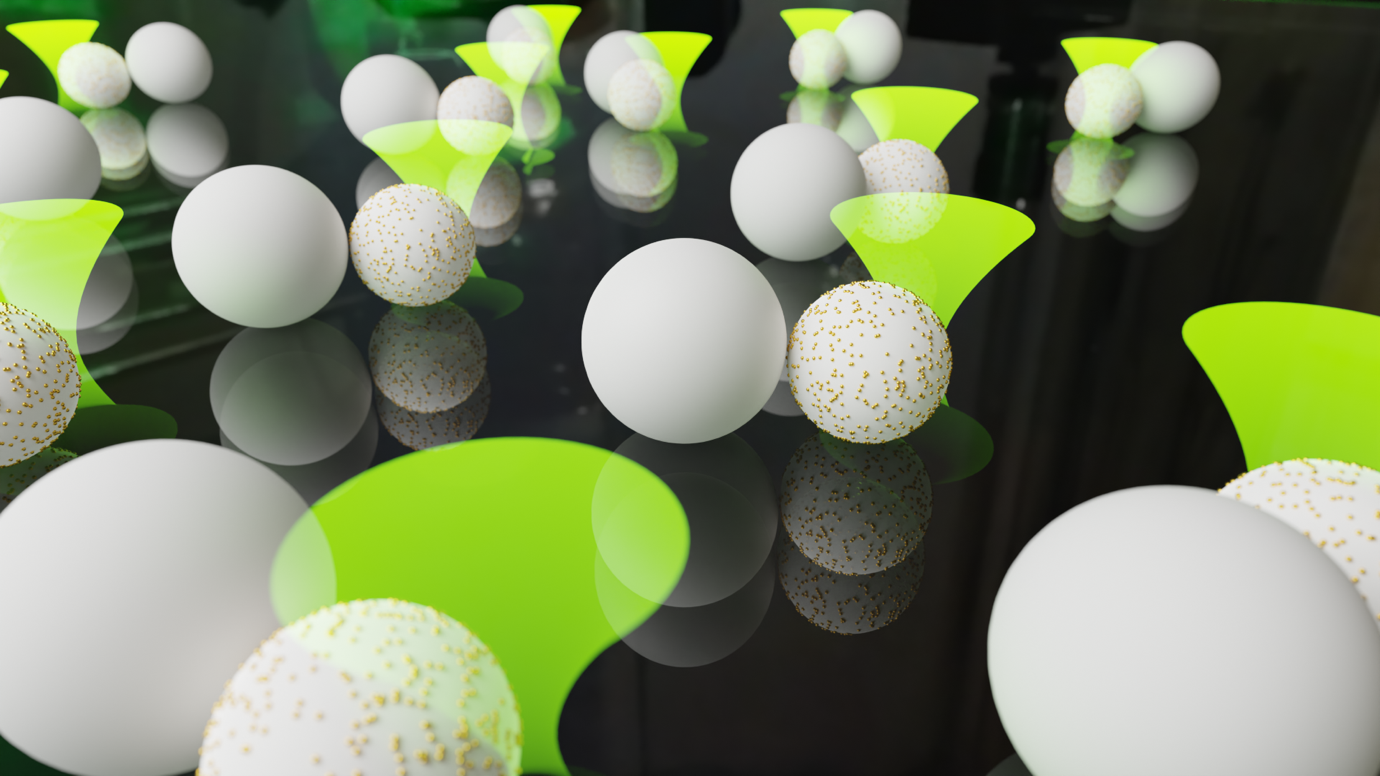Harnessing Synthetic Active Particles for Physical Reservoir Computing
Title: Harnessing Synthetic Active Particles for Physical Reservoir Computing
Duration: 2 years
Research Area: Physical reservoir computer, Physics and Chemistry
The processing of information is an essential property of living systems, realized through networks of active processes with enormous complexity. These networks have inspired many variants of modern machine learning, including reservoir computing. In reservoir computing, stimulating a network of nodes with fading memory enables computations and complex predictions. Reservoirs are typically implemented on computer hardware but can also be created using unconventional physical substrates such as mechanical oscillators, spins, or bacteria, collectively known as physical reservoir computing.
We propose to implement the reservoir computer using synthetic active particles as the substrate. The non-linear dynamics of these active particles serve as the computational resource. The delayed responses of the particles provide a fading memory for the reservoir. Additionally, the transient states of the particles create a high-dimensional space for mapping and reading out the input signal features.

Aims
This project explores physical realizations of reservoir computing in active dynamical systems that are self-organized from microscopic components. We would like to understand how active components that are subject to strong noise could provide the structure and dynamics of suitable reservoirs to process information with the help of soft active matter.
Problem
Storing and processing information is fundamental for living systems. From the detection of low concentrations of chemicals by bacteria to navigate their environments, to the feedback mechanisms that maintain and control the functions of organisms, and the sophisticated computations performed by large biological neural networks in the brain, these processes highlight the critical role of information processing in living matter.
These biological processes rely on inherent activity, such as microscopic energy conversion, to power signalling cascades even in the presence of strong thermal noise. Inspired by these biological systems, many computational models in machine learning have been developed, typically executed on well-designed electronic hardware that uses entirely different information representations than living matter. Recurrent neural networks (RNNs), with their ability to learn from information sequences, such as language or time series, are one such mathematical algorithm. Reservoir computers, a variant of RNNs, use sparsely and statically connected recurrent nodes or even a single node through time-multiplexing to create a high-dimensional space for information to spread across many degrees of freedom.
Unlike other neural networks, where all components’ interactions are optimized during training, the training of reservoir computers often involves only adjusting the readout to retrieve desired information from the node states. The objective of this project is to develop a novel physical reservoir computing system based on the dynamics in active particle systems. Starting with feedback controlled experimental systems we seek to minimize the control of the active systems by leveraging the inherent complex, chaotic behaviours of active particles to process external signals.
Technology
The Molecular Nanophotonics Group is employing experimental control schemes to active microparticles which self-propel under the consumption of local energy, e.g. local conversion of electromagnetic energy into heat. We self-organize these active systems with the help of delayed actions, i.e. the retarded response of the active particle to an observation.
- The implementation of Active Particle Feedback Control. We develop optical feedback control algorithms to self-organize active particles into recurrent active units.
- Characterization of Reservoir Computing Performance. We use nonlinear active particle systems to construct a reservoir that is supplied with time-series data. Current realizations use single active particle rotators that implement reservoirs by time-multiplexing of data for physical recurrent coupling.
- Historical Reservoir States and Reservoir Size. We introduce a coupling of the current reservoir output to historical states of the reservoir to create robust performance of the reservoir against the noisy state of the individual recurrent nodes.
Outlook
Our project suggests a link between information processing, machine learning, and active matter on the microscale. This connection could facilitate new research on reservoir computing with noise. We anticipate that advanced control over synthetic active matter will lead to the emergence of new physical collective states. Future research could explore the direct physical coupling between the physical nodes involving large scale active turbulence as a dynamical nonlinear state, which allows for robust reservoir computing. Also, memory effects in active matter including hydrodynamic coupling may be explored for coupling historical states of a physical system.
Publications
- Wang, X. & Cichos, F. Harnessing synthetic active particles for physical reservoir computing. Nat. Commun. 15, 774 (2024).
- Wang, X., Chen, P.-C., Kroy, K., Holubec, V. & Cichos, F. Spontaneous vortex formation by microswimmers with retarded attractions. Nat. Commun. 14, 56 (2023).
- Fränzl, M., Muiños-Landin, S., Holubec, V. & Cichos, F. Fully Steerable Symmetric Thermoplasmonic Microswimmers. Acs Nano 15, 3434–3440 (2021).
Team
Lead
- Prof. Dr. Frank Cichos
Team Members
- Dr. Xiangzun Wang
Partners
- Dr. Nico Scherf



